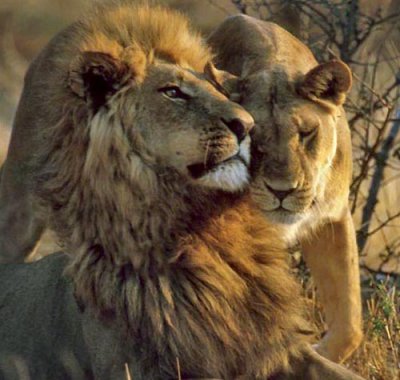|

A recent study by a number of scientists (about 30), most from the University of Copenhagen, looked at modern and ancient DNA to construct both a tree of relationships among extant lions and Cave Lions, as well as some recently extinct lions that used to occur in Africa. For example the Barbary Lion (northern Africa) and the Cape Lion (South Africa). Recovering DNA from whatever remains of animals long dead (sometimes tens of thousands of years) is amazing, as is then the reconstruction of genomes from little bits and pieces of by now highly degraded DNA. Kudos to the scientists at Copenhagen as well as to my friend and contributing author Steve O’Brien (who has been interested in the genetics of large cats for decades).
Overall, the study did not reveal much new information from previous studies (based on mitochondrial DNA, not autosomal DNA) – we pretty much knew already that the extinct Eurasian Cave Lion only had a distant ancestry with extant lions, and that there were deep genetic divisions among African lions.
Based on previous research, we already gleaned that “modern” lions are composed of two major subspecies – one in Africa and one clinging to a small area in India. These subspecies came about because, while “modern” lions for sure had an ancestral origin in Africa, about 70,000 years ago African lions began to explore new lands. Including Europe, the Middle East, Central Asia.
Interestingly, so called Cave lions (they never lived in caves, but that’s where their fossils were found) might also have originated and dispersed from Africa – much earlier, like 500,000 to 700,000 years ago.
Two pulses of lion emigration from Africa then. And – there were also two pulses of emigration of hominids from Africa – Homo erectus went far and wide, including Java, and early Homo sapiens came later – and encountered by then evolved lineages of Homo erectus in Europe like – Neanderthals.
Back to lions.
Cave lions went extinct about 14,000 years ago, and modern lions might well follow. What we have now is little bits and pieces of remnant lion populations in Africa and some very few populations of over 1,000 individuals. Sadly, the African remnant populations, especially those in western Africa, are the most interesting. Western African lions have been shown to be more closely related to the Indian lions than lions in southern and eastern Africa. Central African lions we are not so sure about, they seem to have genetic resemblances to both western and eastern African lions. Not a surprise really.
But why those differences? Basically, lions existing north of what is now the Sahara went east and west – to Europe and all the way to India, crossing from Africa via a “land bridge” in what is now Egypt. We have lots and lots of evidence of these lions among people in Europe – including magnificent cave paintings found in Chauvet in France dating back to maybe 30,000 years BP.
The southern and eastern African lions stayed where they were, perhaps they were not issued the right visas?
Amazing as the recovery of ancient DNA from Cave lions and phylogenetic reconstructions of modern lion relationships are, these publications do not talk well to real and present dangers of lion conservation. For example, the highly genetically unique populations of lions remaining in Benin, Burkina Faso and Mali, already reduced to maybe 350 individuals, are further threatened by civil strife and Islamist militias operating in the areas where these lions occur. Not a good hope for survival. The only other hope for future survival of western African lions might rest with Senegal/Guinea – and while we are engaged in many conversations with the Senegalese, they admit that maybe only 16 – yes 16 – lions remain.
The authors, in their concluding statements, say that “Lastly, our results may be useful in light of conserving the remaining wild lions”. But then there is nothing really forthcoming except to say that the small Indian lion population is highly inbred and could boost “their genetic diversity through outbreeding” (with western African lions) but that this “strategy would be … politically challenging”.
Therefore, in my opinion, this paper provides scientific value (origins and genetic relationships among long extinct, recently extinct and extant lions). We now need to add measurable conservation value to encourage all lion range states to take positive action to ensure that lions will not all become fossils in the near future?
At LionAid, we have engaged the Senegalese and Cameroonian and Nigerian wildlife departments to encourage lion population conservation in their countries. Genetic studies will not convince them – as they are not relevant to challenges on the ground. It takes a strong collaboration between conservation organizations and African governments to decide the best future for lions.
We applaud the University of Copenhagen for this very interesting new DNA analysis. Now we need to address the gritty conservation needs of lions directly with the remaining lion range States.
|




